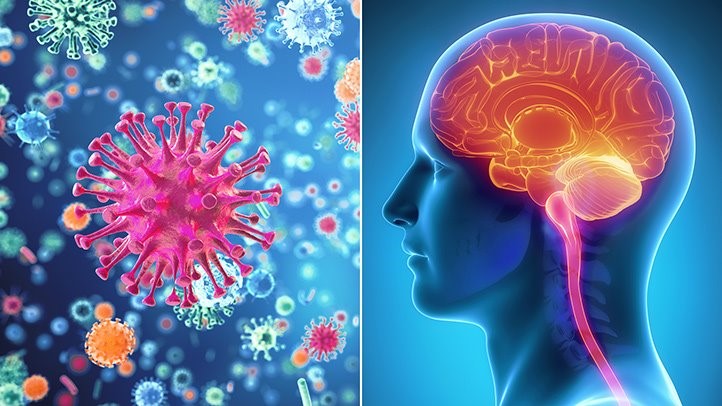Meningitis refers to the inflammatory condition of the protective membranes that surround and protect the central nervous system, known as the meninges. There is significant heterogeneity in the severity and clinical presentation of patients with meningitis, ranging from mild and self-limiting forms to severe and life-threatening conditions. As a result, a corresponding heterogeneity characterizes the symptoms, which may include headache, neck stiffness, fever, confusion or altered consciousness, irritability or drowsiness, photophobia, vomiting, and, in some cases, rash. Various infectious agents, both viral and bacterial, have been implicated in causing inflammatory meningitis.
The diagnosis or exclusion of meningitis is performed via lumbar puncture (LP), during which a sample of cerebrospinal fluid (CSF) is collected and subjected to tests such as staining, bacterial cultures, and white blood cell count as an indication of active inflammation, in order to both diagnose meningitis and determine whether it is acute bacterial meningitis or aseptic meningitis.

Image 1. Source : https://www.cdc.gov/meningococcal/about/photos.html
In the case of acute bacterial meningitis, the causative pathogen is usually one of the following, such as Neisseria meningitidis, Streptococcus pneumoniae, Haemophilus influenzae type b, Mycobacterium tuberculosis, as well as various others. The diagnosis of bacterial meningitis is made using Gram stains and bacterial cultures. However, in some cases, either due to the low sensitivity of these methods or because the microorganisms are non-viable and cannot be cultured, molecular diagnosis is considered particularly important. Once the bacterial cause is identified, meningitis is effectively treated in the majority of cases with antibiotic therapy. The sooner treatment begins, the lower the chances of developing secondary complications, the most common of which are deafness, epilepsy, vision problems, fatigue, memory loss or difficulty concentrating, and cognitive deficits in younger individuals. For this reason, in many cases, a molecular approach is indicated as a more immediate diagnosis compared to bacterial culture, which is a particularly time-consuming experimental procedure.

Image 2. Source : https://ghanatodayonline.com/meningitis-kills-40-out-of-400-patients-up-north/
Aseptic meningitis refers to the inflammation of the meninges, the protective membranes surrounding and protecting the central nervous system, which is mostly caused by viruses and, to a much lesser extent, by bacteria, fungi, or other parasites. The most common viruses that cause meningitis include enteroviruses, polioviruses, herpesviruses, Epstein-Barr virus, cytomegalovirus, varicella virus, West Nile virus, measles, mumps, rubella viruses, and others. In particular, with enteroviruses, the varicella virus, and measles, neurological symptoms and a rash may precede or coexist. Specifically, if meningitis is accompanied by a rash on the hands, feet, and mouth (Hand, Foot, and Mouth Disease), it is an indication of an infection by Coxsackie virus type A. The most vulnerable age groups to Coxsackie virus infection and generally to enteroviruses are primarily young children due to the fecal-oral route of transmission. The diagnosis of viral meningitis is mainly made through molecular and serological methods. Early diagnosis of viral meningitis helps control the indiscriminate use of antibiotics. In this case, there is no specific treatment other than antiviral therapy or, in some cases, corticosteroids to prevent secondary inflammatory complications.
The most effective preventive measure for meningitis is vaccines. Available vaccines against bacterial meningitis provide protection against Neisseria meningitidis (serogroups A, C, Y, and W135), Streptococcus pneumoniae, and Haemophilus influenzae type b. Regarding viral meningitis, available vaccines provide protection against poliovirus, measles, mumps, varicella, and certain arboviruses. Other preventive measures include prophylactic antimicrobial therapy for individuals who have had prolonged contact with someone suffering from meningococcal disease.
It is particularly important to mention that Greece is one of the few countries in the world that monitors meningitis in its entirety, with the main goal being the surveillance of meningococcal disease. From 2004 to 2020, a total of 1,100 cases of meningococcal disease were recorded in Greece, showing a significant decline from 2013 onward. Finally, it is worth noting that between 2005 and 2009, Greece recorded 3,663 cases of meningitis, more than 50% of which were of viral origin. Neisseria meningitidis was the most frequent cause of bacterial meningitis, accounting for 15%. Since 1997, no cases of poliomyelitis have been reported in Greece, and the high vaccination coverage has contributed to Greece being certified as one of the polio-free countries in the world since 2002.
Molecular Syndromic Diagnosis of Bacterial and Viral Meningitis in CSF performed at the Diagnostic Department of Hellenic Pasteur Institute.
| Syndromic Diagnosis of Bacterial Meningitis Neisseria meningitis (meningococcus)Haemophilus influenzaStreptococcus pneumoniaStreptococcus agalactiaeListeria monocytogenesEscherichia coli16S rRNA (standard PCR και sequencing) | Syndromic Diagnosis of Viral Meningitis Virus Herpes simplex 1 και 2,Virus varicelle-zonaEnterovirusVirus d’Epstein-BarrCytomegalovirusHerpesvirus humain type 6 και 7 |
